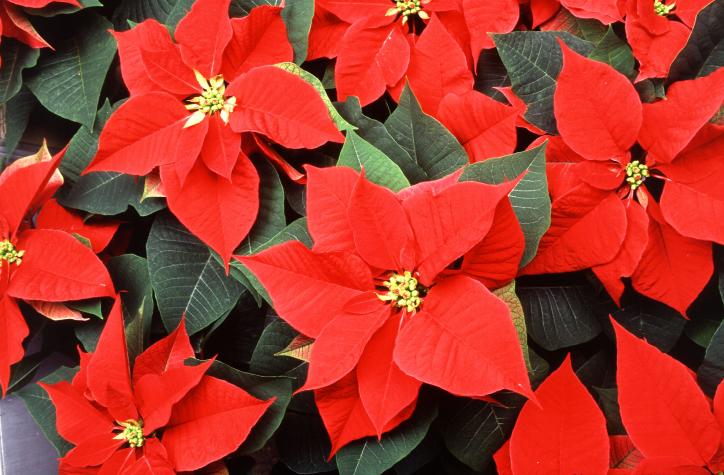COLUMBIA, Mo.– It’s not easy and the results may be less than hoped for, but a University of Missouri Extension horticulturist suggests anyone with a green thumb might try reblooming a poinsettia at least once.
“Reblooming a poinsettia is a real challenge, but I would encourage everyone to accept that challenge at least one time,” said David Trinklein.
If you’re up to the challenge, here’s what you need to do.
After Christmas, keep the poinsettia well-watered—but not overwatered—and well-fertilized, Trinklein said. Place the plant near a brightly lit window. Once it’s warm enough outside—around mid-May—place the plant outdoors in a sunny area, keeping it in its original pot. Continue watering and fertilizing throughout the summer.
“Around Labor Day, prune back the poinsettia severely,” he said. “It will have grown all summer and will be overly tall.” Not only will pruning make the poinsettia shorter, it also will grow bushier and cause more blooms to appear.
Then comes the hard part. Poinsettia is a short-day/long-night plant. In nature, it needs long periods of uninterrupted darkness each night, starting in the fall, in order to bloom. “This triggers the poinsettia’s shift from a vegetative mode to a reproductive mode,” he said.
To accommodate this in the home, beginning about Sept. 25 put the poinsettia in a dark place at sunset. After sunrise the next morning, take it out again and place it in a brightly lit indoor location. It’s important that the darkness be total and uninterrupted throughout the night. Even nearby streetlights can “fool” the plant into thinking it’s summertime and delay the formation of blooms.
You’ll need to repeat this routine every day for about nine weeks, or until color starts to form in the bract clusters, which are the leaves surrounding the poinsettia’s small, nondescript flowers.
Don’t expect your plant to look just like the ones at the floral shop. “Rebloomed poinsettias tend to be tall and stretchy,” Trinklein said. “While the results might be disappointing, the satisfaction of having achieved it yourself is well worth the effort, at least one time. It’s remarkable to see nature in action as color develops slowly but surely.”
